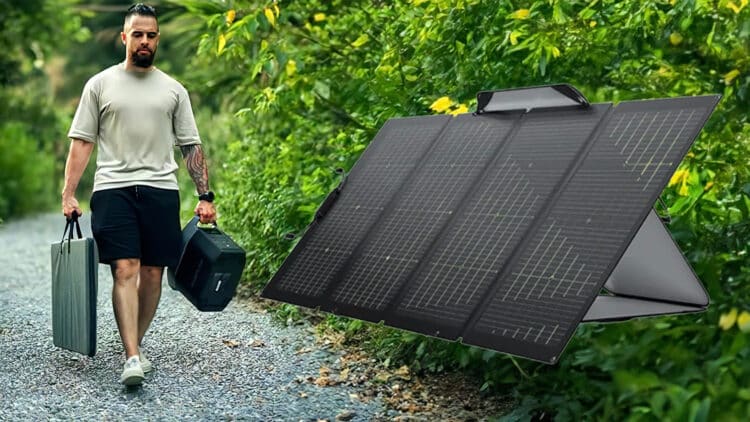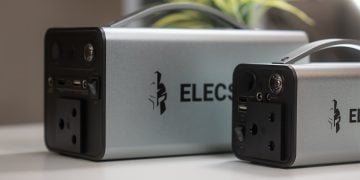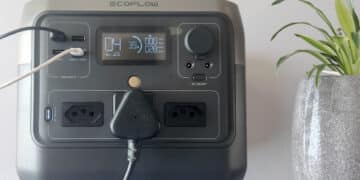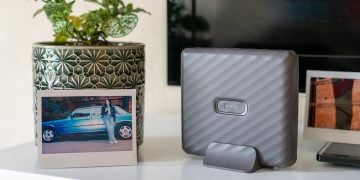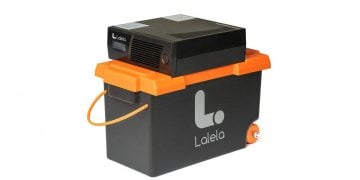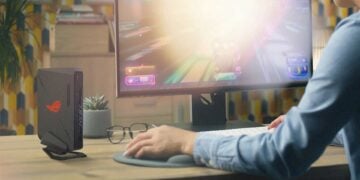I reviewed the EcoFlow RIVER 2 Max portable charger a few weeks ago. The unit proved extremely useful while travelling during the vacation period. Not only did it have quite the output for a portable charger, but the battery life was also excellent. However, I also tested using a backup recharging input, the EcoFlow 220W Bifacial Portable Solar Panel, during the same period.
There are plenty of options for alternative power for your home. However, renting or living in a complex isn’t always as straightforward. Finding easy-to-implement solutions is vital, and EcoFlow offers several variations to help you find the ideal solution for your home. Almost all of these solutions are integrated and compatible, making them practical and efficient.
Build and Design
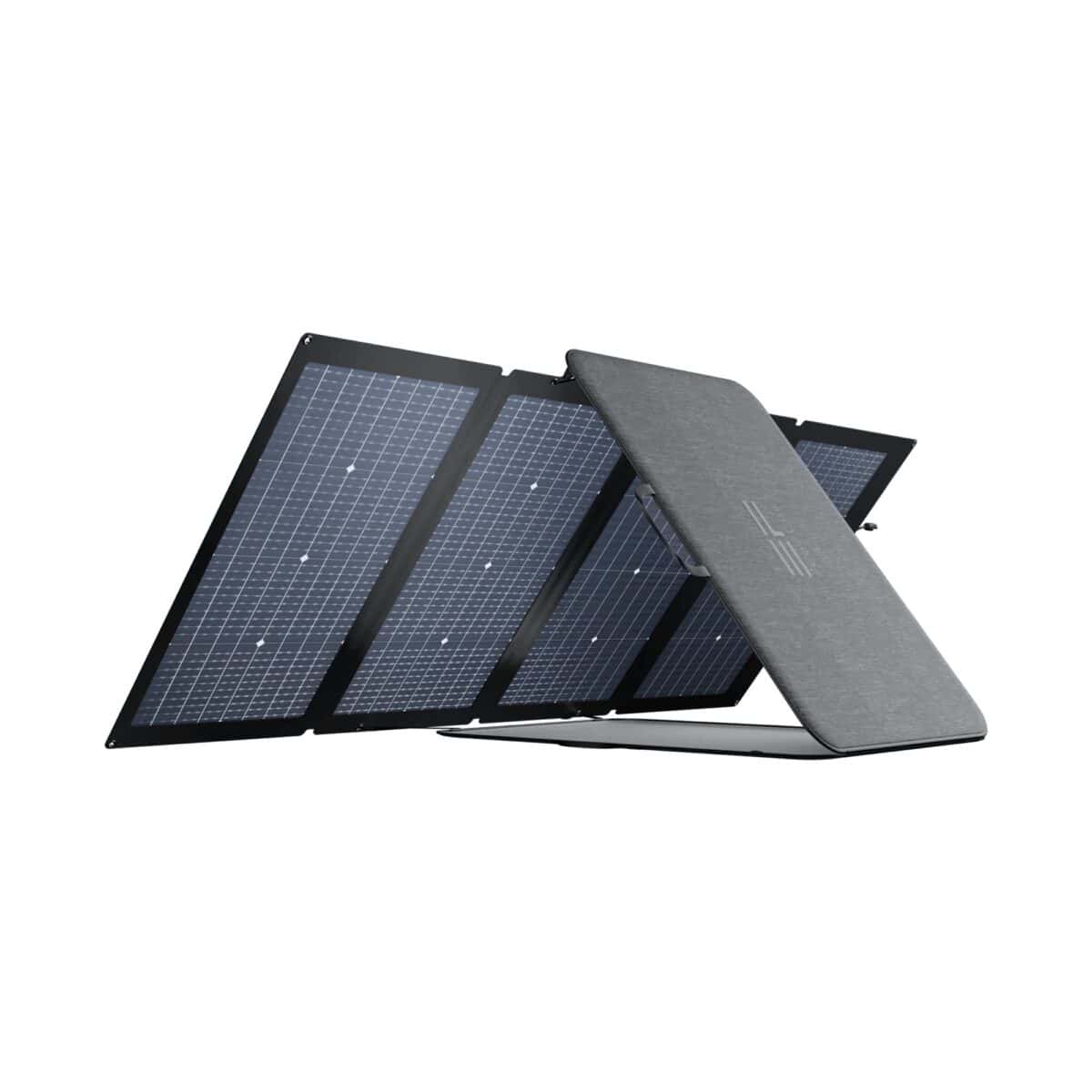
On paper, the design of the Bifacial Portable Solar Panel seems elegant enough. Its design and construction have many positive aspects.
The first of these is hinted at in the name. It offers a two-sided source to draw from the light. The device is crafted from tempered glass to give it a rugged build. As such, it can withstand quite a bit of force while simultaneously capable of up to 150°C (300°F) heat from exposure to the sun.
While out catching the sun’s rays to recharge your portable batteries, you needn’t worry about a sudden change in the weather either. It offers an IP68 rating, making it both dust and waterproof. I was caught out once in a bit of drizzle before the rains, but my main concern was the connecting cables to the portable battery rather than the solar panel itself.
EcoFlow claims that it is a one-piece glass. However, the panel is split into four segments, with a fold between each, allowing it to be neatly stored away. It comes with its carry case to tuck away into. The carry case also has a hardened side, allowing it to double as a kickstand.
While the unit is easy to fold away into its carry case, it’s not as easy to lug around. It weighs around 10KG (9.5KG to be exact – 20.9lbs), making it reasonably hefty. It has dimensions measuring 820x1830x25mm. Although the carry case has a handle, its size makes it slightly cumbersome, frequently bumping against my legs as I carried it around. It’s also not practical for anyone shorter than 1.7m, as it will most certainly drag on the floor while attempting to carry it around in this manner.
Features
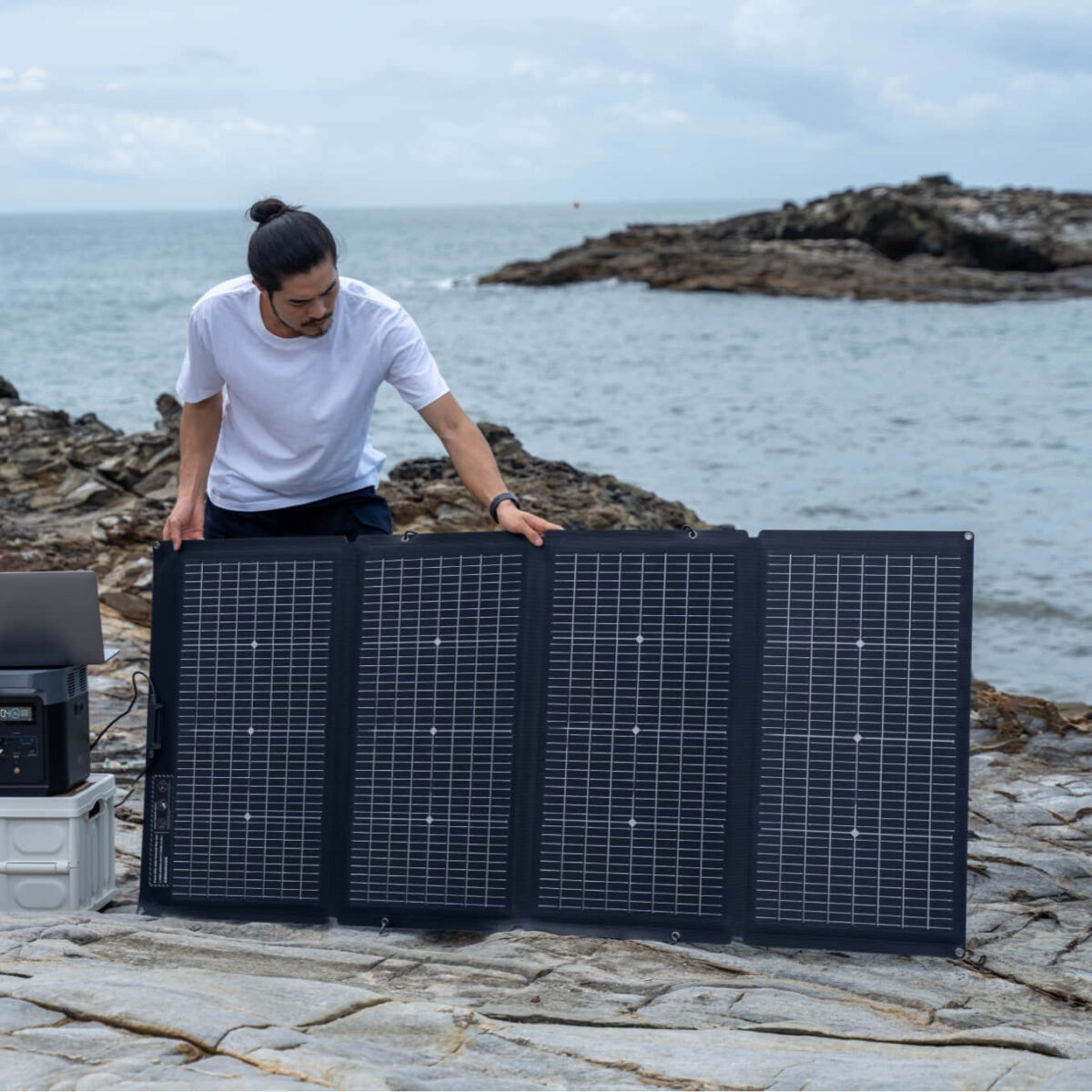
As mentioned previously, and as per the title, the solar panel has dual sides – or bifacial. The primary side has a power rating of 220W, while the rear is capable of an additional 155W from ambient light. In total, it has a maximum 375W capacity to recharge your batteries.
The panels are made from Monocrystalline Silicon and protected by tempered glass. It is stated that it is up to five times the strength of similar solar panels from other manufacturers.
The device uses an MC4 connector, which is used by the majority of EcoFlow batteries. However, other portable charges use different ports, with the APP port being the most widely used. If you require an APP port, a few adapters are available, so it’s not such a significant issue in the long run.
There are a few holes around the edges of the solar panel. This allows for Carabiners to be positioned throughout to connect to the kickstand. This makes it more effective to position on various surfaces.
Setting Up the EcoFlow 220W Bifacial Portable Solar Panel
The EcoFlow 220W Bifacial Portable Solar Panel’s configuration is easy to initiate but a touch more complicated using the kickstand.
Out-the-box use is pretty straightforward. All you have to do is place it down with the sun directly above and plug in the connectors to your EcoFlow battery. The battery will automatically recognise the input as solar panels and adjust accordingly.
However, things are a touch more complex when aiming to optimise the input, drawing in as much light as possible from the sun. In this case, it’s suggested to position it at a 45° angle towards the sun. As such, you’ll need to utilise the carry case as a kickstand, which isn’t the most robust.
For starters, unfolding the solar panels to stretch out fully is a bit difficult, only because they’re pretty robust and a tad heavy. Placing it against the kickstand requires the Carabiners to be positioned accurately. However, getting it into the correct angles and upright without supports takes some time.
To be honest, unfolding the device from its carry case every time became a bit of a nuisance. More often than not, I would lean the panel against another more robust object or wall to get the quickest and best results.
RELATED: EcoFlow DELTA 2 Brings Extended Gaming During Loadshedding
Performance
When it comes to actual tests, there’s a lot to consider. For starters, the solar panel has a rating of 220W output. However, Monocrystalline Silicon has an efficiency loss of 20-25%, which means that while it is capable of 220W, the energy loss means that it would rate somewhere between 165W and 176W. This isn’t all that bad, as is the norm for most similarly rated solar panels.
Thanks to its bifacial capabilities, the rear is also capable of 155W. With the same efficiency loss, you have a rating between 116W and 124W. In total, you have the potential for 281W at its lowest efficiency.
Things, however, aren’t as straightforward, as you’ll need to factor in accurate positioning to match the sun’s angle and have the perfect surface to reflect on the rear for enough ambient light to reach anywhere close to the 116W capability.
For the most part, on average, in direct sunlight, I could reach between 150W and 200W charge. This was impressive, allowing me to recharge the RIVER 2 Max in around 2-3 hours. On occasion, I could reach even above the 220W rating. However, I would often need to utilise a reflective surface on the rear to boost the light.
The rear adds roughly 10-20W from ambient lighting in most standard lighting conditions and positioning. This is a fraction of the total capacity. That said, the capability is still there, allowing users to extract the most from the solar panels if the conditions are all met.
Further to the testing in the brightness of the summer sun, I also tested it in less-than-ideal conditions. A few times, I tested in completely overcast conditions. Even still, I was able to extract between 40-70W to recharge. While it could still eke out some power, charging would take two to three times as long.
Is It Worth Investing in the EcoFlow 220W Bifacial Portable Solar Panel?
The EcoFlow 220W Bifacial Portable Solar Panel is excellent. It delivers excellent performance and is relatively easy to use, even for novice users. My biggest gripe is the clumsy kickstand, which has simple workarounds. It’s not as portable as the EcoFlow RIVER 2 Max but can be carried along with all your travels.
The solar panel is available online via the EcoFlow website. It retails for R11,499 but is currently available on sale for R9,999. Interestingly, at the current pricing, the RIVER 2 Max is available at a lower price than the solar panels. As such, you could purchase two of the portable charges.
However, the practicality of the solar panels is excellent. While I used it most on the road, it was just as quickly used at home with the DELTA 2, thanks to its long cables. The EcoFlow 220W solar panel is an excellent buy for anyone looking to boost their options and solve the ongoing loadshedding while reducing overall electricity costs.
RELATED: EcoFlow RIVER 2 Max – Portability At Its Best
| Model: Zenbook S 16 (UM5606) Copilot+ PC |
| Specs: CPU: AMD Ryzen™ AI 9 HX 370 Processor 2.0GHz Graphics: AMD Radeon™ 890M GPU Neural Processor: AMD XDNA™ NPU up to 50TOPS Display: 16", 3K (2880 x 1800) OLED, 120Hz, 500nits HDR, Touch Screen RAM: 32GB LPDDR5X Internal Storage: 2TB M.2 NVMe™ PCIe® 4.0 SSD |
| Brand: ASUS |
The Review
220W Bifacial Portable Solar Panel
The EcoFlow 220W Bifacial Portable Solar Panel is a great addition to your EcoFlow charging solutions. It offers an alternative to conventional recharging, while also being portable for use while on the road or a day at the beach.
PROS
- Bifacial tempered glass
- Potential for more than 220W of power
- Foldable design for easy storage
- IP68-rating
CONS
- Clumsy kickstand
- Bit of a premium price


